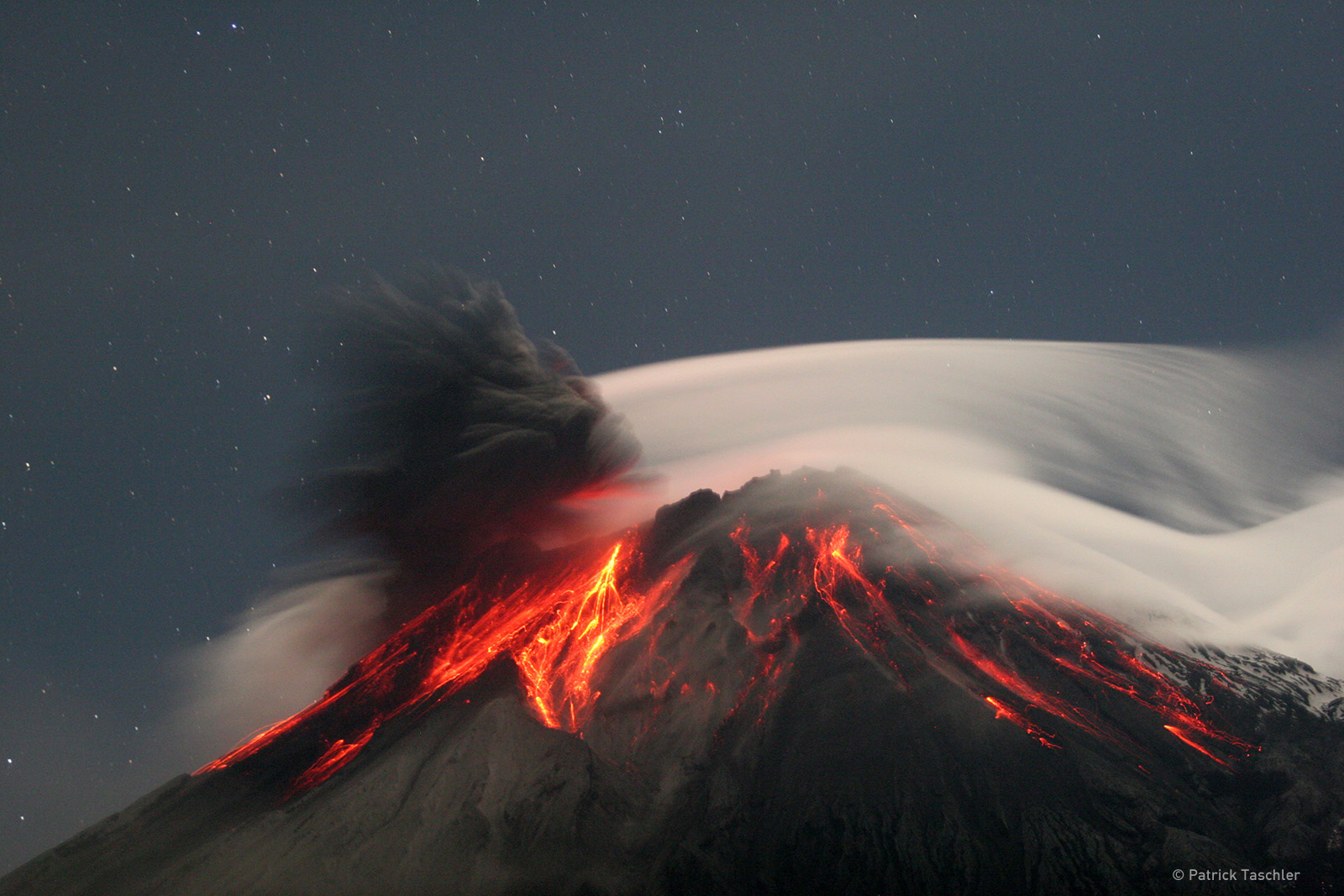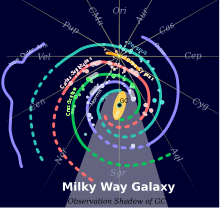En este Blog Creado Por Ana Del C. Torres, MIS y Profesora UIA es una manera facil rapida y sencilla que se ira actualizando con articulos y enlaces de Tecnologia . Ciencia , Redes . Con temas relacionados con Investigaciones y aportaciones en las Ciencias de Inteligencia Artificial.En Investigaciones Paranormales podras ver articulos y los links de los sites de: Dante Franch,ovni.net entre otros. Todo aquel que desee desarrollar ideas para mejorar este Blog esta bienvenido
Turbinas de Viento
Amazing
Portal De Tecnologia y Ciencias

sábado, 25 de agosto de 2012
Impresionantes fotos del Tungurahua
Un descenso en el número y fuerza de las explosiones, así como en los tremores (temblores constantes) por la emisión de gas y ceniza, calman los temores de los pobladores cercanos al volcán ecuatoriano Tungurahua, que experimentó un nuevo pulso de gran actividad desde el pasado viernes. También han bajado de intensidad y son apenas esporádicos los fuertes ruidos como bramidos que salen del interior de la montaña, los cuales han sido escuchados en zonas cercanas al coloso y no a los 30 kilómetros de distancia a los que llegó la onda hace unos días, informó el Instituto Geofísico (IG) de la Escuela Politécnica Nacional. Pese a la caída en la intensidad eruptiva, que todavía es considerada como "moderada", el IG ha recibido reportes de la caída de ceniza en la zona de Choglontús, en el suroeste de la montaña. (Con irformación de EFE)
Los trenes más rápidos del mundo
La tecnología en materia de transportes avanza a pasos agigantados y en la actualidad, muchos países trabajan en la construcción del tren más rápido del mundo. China viene trabajando desde hace años en su tren-bala, Japón dio las primeras puntadas con su vehículos magnéticos y España, el país con más trenes de alta velocidad en todo el mundo, son algunos de los ejemplos.
El CRH380A es uno de los 4 trenes de alta velocidad que circulan en China y alcanza una velocidad de 380 km/h (236 mph). AP Photo/Xinhua, Niu Yixin
El Thalys corre a una velocidad de 300 km/h (186 mph), en una línea férrea que une a París y la frontera de Bélgica por la ruta LGV Nord. AP Photo/Christof Stache
El ETR 500 o Elettro Treno Rapido (Tren Elécrico Rápido) es el que transita por las vías italianas a una velocida de 300 km/h. AP Photo/HO
El Eurostar viaja a 300 km/h (186 mph) y conecta a Londres, en el Reino Unido, con Paris (Francia) y Bruselas (Bélgica). Marco Secchi/Getty Images
El AVE Talgo-350, de España, alcanza los 330 km/h (205 mph). AP Photo/Manu Fernandez
En Sur Corea la alta velocidad férrea corre por cuenta de los modelos KTX II y KTX-Sancheon (Korea Train Express), construidos por Hyundai Rotem. Alcanza los 352.4 km/h (218 mph). AP Photo/Jung Yeon-je, POOL
Vista general del THSR 700T, diseñado por la compañía japonesa Shinkansen para la compañía Taiwan High Speed Rail (THSR) que corre a 335.50 km/h (208 mph).
El SNCF TGV Réseau fue construido por la compañía Alstom entre 1992 y 1996, teniendo en cuenta el modelo del antiguo TGV Atlantique. Viaja a 380 km/h (236.12 mph). En la imagen, en una estación de Munich. Johannes Simon/Getty Images
El Shinkansen, más conocido como el Tren-bala, integra la red férrea de alta velocidad en Japón, la cual es dirigida por cuatro operadores. Su velocidad puede llegar a los 443 km/h (275 mph). Gunnar Berning/Bongarts/Getty Images
El Transrapid o TR-09 es el monoriel que recorre Alemania usando levitación magnética. Su velocidad máxima es de 450 km/h (270.3 mph). AP Photo/Focke Strangmann
Ingredients for Big Black Holes Detected in Milky Way's Core
| SPACE.com – Thu, Aug 23, 2012
An artist's illustration of a newfound large star cluster near the center of the Milky Way that may be a breeding ground for intermediate black holes.
Scientists investigated our galaxy's central molecular zone, which contains the most massive, densest, and most turbulent molecular clouds in the Milky Way. These surround the heart of our galaxy, which is suspected to be home to a supermassive black hole about 4 million times the mass of the sun.
The central molecular zones of galaxies crowd lots of gas close together, making them good places for stars to form. To learn more about these lively regions, scientists used radio telescopes to compile detailed maps of the temperature and density of clouds at the Milky Way's heart.
Now scientists have discovered four giant clumps of gas that appear to be the kinds of seeds intermediate-mass black holes arise from. These black holes hundreds to thousands of times the mass of the sun that are thought to in turn serve as the building blocks for the supermassive black holes found in the centers of galaxies.
The clumps are each about 30,000 light-years away. One of the masses contains the black hole suspected to exist at the heart of the Milky Way. This disk-shaped clump is about 50 light-years across "and revolves around the supermassive black hole at a very fast speed," said study lead author Tomoharu Oka, an astronomer at Keio University in Japan. [Strangest Black Holes in the Universe]
The other three clumps are expanding at very fast speeds of more than 223,000 miles per hour (360,000 kilometers per hour), making the researchers think supernova explosions were the cause of this growth, with the fastest blooming of these clumps growing as if 200 supernovas went off inside it. Since the age of this clump is only thought to be about 60,000 years old, which suggests supernovas happened there every 300 years.
Such a high rate of supernovas suggests that many young, massive stars are concentrated inside. The researchers estimate a massive star cluster more than 100,000 times the mass of the sun lurks within, as big as the largest star clusters in the Milky Way.
"No matter how large the star cluster is, it is very difficult to directly see the star cluster at thecenter of the Milky Way galaxy," Oka explained. "The huge amount of gas and dust lying between the solar system and the center of the Milky Way galaxy prevent not only visible light, but also infrared light, from reaching the earth. Moreover, innumerable stars in the bulge and disc of the Milky Way galaxy lie in the line of sight."
Huge star clusters at the center of the galaxy are where intermediate-mass black holes several hundred times the mass of the sun are expected to form.
"Many galaxies with central molecular zones may harbor such young massive clusters," Oka told SPACE.com.
"The new discovery is an important step toward unraveling the formation and growth mechanism of the supermassive black hole at the Milky Way galaxy's nucleus, which is a top-priority issue in galactic physics," he added in a statement.
It remains uncertain how many intermediate-mass black holes might lurk in the central molecular zones of galaxies, or at what rates they are created. "Further investigations of the central molecular zones of our galaxy and other galaxies will reveal them," Oka said. Specifically, the Atacama Large Millimeter/sub-millimeter Array (ALMA) of radio telescopes may detectintermediate-mass black holes, he added.
The scientists detailed their findings in the August issue of the Astrophysical Journal Supplement Series.
Suscribirse a:
Comentarios (Atom)
El Cielo

Explosion de Una Supernova
Bienvenidos aquellos que no se conformen en ver en tres dimensiones
Saludos mis amigos(as) ; Colegas y estudiantes
Aqui estara una herramienta para todos donde podremos compartir nuestras ideas opiniones e informacion de una manera honesta y clara para que todos aquellos que acesen este blog puedan utilizarlo para crecimiento y conocimiento.
Las fuentes de informacion de este blog provienen de diferentes areas dentro de la red excepto algunos que son estudios de mi autoria
Aqui estara una herramienta para todos donde podremos compartir nuestras ideas opiniones e informacion de una manera honesta y clara para que todos aquellos que acesen este blog puedan utilizarlo para crecimiento y conocimiento.
Las fuentes de informacion de este blog provienen de diferentes areas dentro de la red excepto algunos que son estudios de mi autoria
Videos para aprender
Vive el mas que sueña
una nueva conciencia

No estamos solos
el maestro

LINUX













